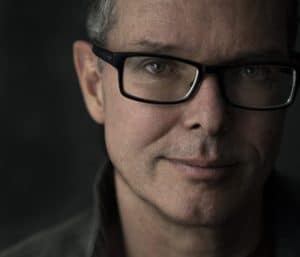by Frans Stiene

The word kototama 言霊 literally means “word spirit” or “soul”. But it also stands for the spiritual (tama) power of sound (koto).
While the practice has roots in ancient Japanese culture, Kototama started to gain popularity again in Mikao Usui’s time. This was also due to the fact that the Meiji Emperor and his wife were modern kototama researchers and practitioners.
Some Japanese Reiki lineages do not use the kototama chanting; one reason is that some of these lineages come through Chujiro Hayashi who only trained with Mikao Usui for a very short period of time, approximately 10 months.
“When John studied with Takata, he made over 20 audio tapes of her lectures and classes. On one of the tapes she discusses travelling to Japan in order to teach her approach to Reiki. While there, she met some Japanese citizens who were actively practicing and preserving Reiki as they understood it in Japan. Takata regarded their approach as entirely valid, but inappropriate for the West. It was highly complex, required years of training and was closely intertwined with religious practices. She felt these factors would deter students in the West and hobble the spread of Reiki through the world at a time when, in her view, it was urgently needed.” – Hand to Hand by John Harvey Gray
This quote points out that Mrs Takata met some traditional students of Mikao Usui and learned from them that his teachings were highly complex, required not just months but years of training, and were closely intertwined with Japanese religious practices.
“Next, although Hayashi Sensei advertised to the public that he taught “Usui” Reiki Ryoho after he had become independent of the Gakkai, he actually taught “Hayashi” Reiki. He adopted his own theories and techniques aimed at curing disease.”
– Hiroshi Doi
Therefore, we can see, different lineages teach different ways. One is not better than the other, just different.
The two booklets Shin-Shin Kaizen Usui Reiki Ryoho Kokai Denju Setsumei and the Usui Reiki Ryoho Hikkei, both handed out by the Usui Reiki Ryoho Gakkai, contain an interview with Mikao Usui. His answer to one of the questions is a very important pointer to Usui Sensei’s teachings:
“Q. Does Usui Reiki Ryoho only heal illness?
A. No. Usui Reiki Ryoho does not only heal illness. Mental illnesses such as agony, weakness, timidity, irresolution, nervousness and other bad habits can be corrected. Then you are able to lead a happy life and heal others with the mind of Kami or Hotoke [Buddha]. That becomes the principal object.”
As we can see from the above interview with Mikao Usui himself, the state of mind of Kami – Shinto and Buddha – Zen are the principal objects of his teachings! And that we have to lead a happy life and heal others with the mind of Kami and Buddha! Kototama practice was used a lot in Mikao Usui’s time in Shinto, Buddhism, Martial Arts etc…
“Finally, we did the “deep chant,” taking the vowels A I U E O and energetically singing them out with our whole body and soul, sound by sound, as U A I E… Sensei always said, “teaching this discipline is the greatest kindness. The first step in your training is to practice this.” – Passionate Journey The Spiritual Autobiography of Satomi Myodo. (1896-1978)
This was taught to Satomi Myodo by a Zen teacher in 1923, which was in Mikao Usui’s time. And we know that Mikao Usui trained in Zen. Plus he also pointed out kindness in his Reiki precepts; what is the greatest kindness? Teaching Kototama A I U E O.
Kototama was not just taught in Zen, but also in Shinto. And we see many Shinto links with Mikao Usui’s teachings too.
“The method of godaiboin [the 5 great vowels] involves chanting each vowel, “A-O-U-E-I” as long as you can in one breath. It is important to voice them out loud and from the bottom of your abdomen.” – Motohisha Yamakage – The Essence of Shinto – Japan’s Spiritual Heart
We can see O U E I in this too, which is linked to the Okuden Reiki II mantra Choku Rei or Noahi, which is also used in Shinto.
“The term chokurei 直霊. Choku (直) means ‘direct and rei (霊) means ‘spirit’. Chokurei is the light emanating directly from God to form the origin of humanity. Chokurei could be translated as ‘God in the human world,’ ‘Direct Spirit,” or ‘Divine Self.’” – From Masahisa Goi’s book, “God and Man, Guideposts for Spiritual Peace and Awakening”
“There I encountered my own divine spirit [Choku Rei 直霊] ” – From Masahisa Goi’s book, “Living Like the Blue Sky – 5 talks by Masahisa Goi
So when we practice the Kototama OUEI we might encounter our own Divine Spirit, which is the same as Kami. And as Mikao Usui stated in his own words, this mind of Kami is the principal object of the teachings.
“The universal body, when seen as our personal spirit, is called naobi, the kototama of SU and U.” “Noabi, our direct spirit, is the mirror mind of perfect wisdom, the quality of clear reflection.” – Aikido and Words of Power – The Sacred Sounds of Kototama by William Gleason. (Noabi = Naohi= Choku Rei – same kanji)
So all of these teachers pointed out the same thing and used similar practices as Mikao Usui.
“Another repetitious chant, the “five great vowels” (AOUEI) started being used during the Heian period (794-1185)” – Motohisha Yamakage – The Essence of Shinto – Japan’s Spiritual Heart
“The method of godaiboin [the 5 great vowels] involves chanting each vowel, “A-O-U-E-I” as long as you can in one breath. It is important to voice them out loud and from the bottom of your abdomen.” – Motohisha Yamakage – The Essence of Shinto – Japan’s Spiritual Heart
The more we look at these traditional Japanese teachings the more we see so many similarities in them. And Mikao Usui studied not only Shinto and Zen but also Martial Arts.
“The kototama is not merely the sound of the human voice. It is the red blood in your hara, boiling over with life. When I chant the sounds of A O U E I, the gods which perform the functions of these kototama gather around me. A true human being can do this and a great deal more.” – Founder of Aikido Morihei Ueshiba 1883 – 1969
So we can see those sounds too in Aikido; again all those great teachers used similar practices and pointed out the same thing: our true human nature.
“After the entire body congeals into a kototama, simultaneously pronounce the seed syllables and tap in the universal beams of energy; let the self expand into a huge sphere before actually vocalizing the sounds. As the seed syllables emerge from deep within your being, draw the universe into your body. Your spirit will be suffused with light and completely centered.” – – The Secret Teachings of Aikido by Morihei Ueshiba
This is just like joshin kokyu ho and the second symbol in Okuden Reiki II is a seed syllable. Again so many similarities.
“From the earliest times in Japan, kotodama was considered the highest and most pleasing form of speech, speech that could only be understood by people of the highest character and who possessed total integration of body and mind. Furthermore, if mastered, kotodama was believed to be the secret speech of the gods, a potent source of incantation, magic and miracle-working. One who understood and uttered kotodama was revered as a person of truth and divinity.’” – Kisshomaru Ueshiba The Art of Aikido
What is a person of the highest character? A person who is not angry or worried, who is grateful all the time, being true to their way and their being and has a compassion which doesn’t change according to circumstances. And what is that miracle working? Helping others to see their true nature, their great bright light, through hands-on healing etc…
“Our entire being is in fact kototama. If we refine our understanding of kototama, and perceive how kototama functions, we can begin to comprehend existence itself. And not just in our own limited sphere, but the entire cosmos, as mapped out in our ancient chronicles.” – The Heart of Aikido by Morihei Ueshiba
Through the practices Mikao Usui put in his teachings we slowly start to realize that our entire being is kototama, that we are Reiki, the embodiment of the Reiki precepts in all we do today in our daily life. And that is kototama practice. Kototama practice can not be intellectualized; it needs to be embodied through prolonged practice.
“At the time of uttering the syllables EI, KEI and KI he makes the mudra of beckoning the fire God, by bending the index finger. The flame of the fire is considered as the Fire god himself.” – from a traditional Japanese Goma ritual manual.

